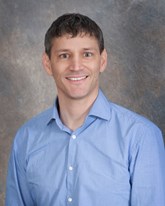Why You Should Consider Thermal for Remediating Bedrock Source Zones
By: Steffen GriepkeTreating fractured bedrock is typically more complex than treating porous media like sand or clay, and effective remedial options are limited. Due to the fractured nature of rock, contaminations often migrate deep, and pathways out of the bedrock system are limited. The discrete nature of the fractures—and the impact the fracture network has on groundwater flow, contaminant occurrence, and distribution—makes these sites some of the most challenging consultants and remediation contractors face.
Luckily, thermal technologies are reliably effective in fractured bedrock. In this blog post, I’ll explain why.
If you’d like a more in-depth explanation or have questions you’d like me to address, register for tomorrow’s webinar, Thermal Treatment: A Reliable Option for Your Bedrock Source Zone. I’ll be joined by Krüger Product Manager Niels Ploug, and together we’ll cover various challenges of treating bedrock, the pros and cons of using different thermal technologies, and design considerations you’ll want to understand before project planning begins.
Gathering Data for Treating Bedrock
The first step of any remediation project is, of course, site characterization. To evaluate, select, and design an appropriate thermal remedy requires a representative conceptual site model (CSM) of the nature and extent of both the fractures and the contaminants. For some bedrock settings (e.g., sedimentary formations such as sandstones, siltstones, and shales. While several technologies are capable of addressing the contamination in the fractures, thermal technologies have shown to have distinct advantages over fluid flushing technologies. In comparison to fluid flushing technologies (e.g., oxidant flushing, surfactant flushing), heat migration is not as adversely affected by geological heterogeneity as is fluid migration. Therefore, a full mapping of the fracture network is not needed, as long as the source zone is included in the thermal treatment area.
All of these factors are important to consider when selecting the appropriate technology (or combination of technologies). They’re also critical for developing a design that tailors the heating, vapor and liquid extraction approaches to the specifics of the site, physical and chemical properties of the contaminants, and remedial goals.
Why You Should Consider In Situ Thermal Remediation for Bedrock
In the since thermal remediation of fractured bedrock was first attempted, there have been numerous technological advances and successful cleanups of fractured rock. As a result, the capabilities of thermal have expanded, too—beyond what many people are aware.
- Thermal has been effectively utilized to successfully treat contaminated vadose zones deeper than 50 ft bgs. When utilizing thermal conductive heating, no fluids are injected during the remedy, and therefore the risk of downward migration during the remedy is eliminated.
- Saturated source zones have been addressed to depth down to 165 ft bgs. Due to the nature of the bedrock fracture system, contaminants have often migrated deep. With today’s technologies, treatment depths of several hundred feet do not hinder a successful treatment outcome.
- Due to the lower bedrock porosity, the bedrock systems have a lower heat capacity than traditional porous media. Therefore, treatment of bedrock source zones are typically faster and require less energy compared to their porous media counterparts.
- Treatment and removal of DNAPL zones can be addressed. At a recent bedrock site treated using thermal conductive heating, 99% of the total mass was expected to be DNAPL, and all remediation goals were met.
Electrical thermal conduction heating (TCH) has been utilized to successfully remediate bedrock at more than 10 sites in both the eastern and western portions of the United States and in the northern part of Europe. Many of these sites included remediating bedrock DNAPL source zones to very low post-treatment concentrations.
Thermal is an excellent option for addressing contamination within bedrock. If you are interested in learning more about it, I encourage you to join us for tomorrow’s webinar, Thermal Treatment: A Reliable Option for Your Bedrock Source Zones.
If you are unable to make it, register anyway and you will be emailed a link to the recording to watch later.
ABOUT THE AUTHOR

Steffen Griepke
Technology Director
[email protected]
Steffen Griepke is the Technology Director at TerraTherm, a Cascade Company. In this role, he helps clients determine if a thermal remedy would work on their project site and, if so, which thermal technology or combination of technologies would be the most cost-effective. He then leads the design of the remedy and guides its implementation, operation, and continued optimization through project completion.
Steffen has spent nearly 20 years working with thermal technologies and has been involved in more than 75 successful projects. They have included sites from former dry cleaners, chemical manufacturing plants, chemical storage facilities, MGP sites, brownfields, military installations, and tank areas. He has utilized all three of the major thermal technologies: electrical resistance heating (ERH), thermal conduction heating (TCH), and steam enhanced extraction (SEE). As an internationally-recognized in situ thermal remediations (ISTR) expert, Steffen also supports his clients in their communication with oversight agencies and regulators.
Steffen’s experience in designing, operating, and using real-time data for optimizing thermal projects makes him an excellent partner for clients with complex sites or recalcitrant compounds.

